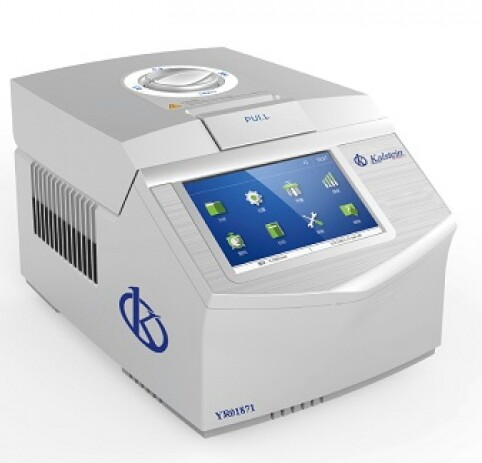A real-time thermal cycler is a laboratory equipment that allows the real-time polymerase chain reaction (qPCR) to be carried out efficiently and quickly; by means of the automatic and cyclical realization of the temperature changes that are required for the amplification of a deoxyribonucleic acid (DNA) chain; from a thermostable enzyme. The objective of this type of PCR is to detect and quantify the specific nucleic acid sequences by means of fluorescent molecules in the reaction, where the increase in fluorescence is proportional to the increase in the amount of amplified DNA molecules in the reaction.
This thermal cycler has a modern coupled optical system, which monitors the signal of the fluorophores used to detect the amplified product. Because the fluorescence of these increases as the product is amplified, the amplification and detection processes are combined in a single step.
Real time PCR
The principle of qPCR is based on endpoint PCR, only the way in which the amplification products are detected and analyzed is different. The real term refers to the fact that the detection of the amplified products happens in each cycle of the reaction. And the term quantitative refers to the fact that it is possible to quantify the amount of sample.
This technique has important characteristics such as high specificity, a wide detection range and speed in the visualization of the product. Real-time PCR systems include a thermal cycler and a unit capable of detecting fluorescent signals to monitor the progress of the amplification reaction, as well as software for data analysis. The fluorophores used to monitor DNA amplification during real-time PCR can be DNA affinity (SYBR Green) or DNA fragment specific probes (Taqman probes).
Types of real-time thermal cyclers
There are different types of real-time thermal cyclers on the market, the main differences of which are the source of energy, which they use for excitation. There are generally three types of sources: light bulbs, light-emitting diodes (LEDs), and lasers. Whatever the fluorescent or reporter molecule used, it is first excited and its emission signal collected through a filter that allows the passage of the corresponding wavelength that reaches a photodetector that captures the information from the sample for analysis in computer software.
At Kalstein we are MANUFACTURERS and we offer you excellent thermal cyclers with the most advanced technology and at the best PRICES. So we invite you to take a look at the Products HERE

